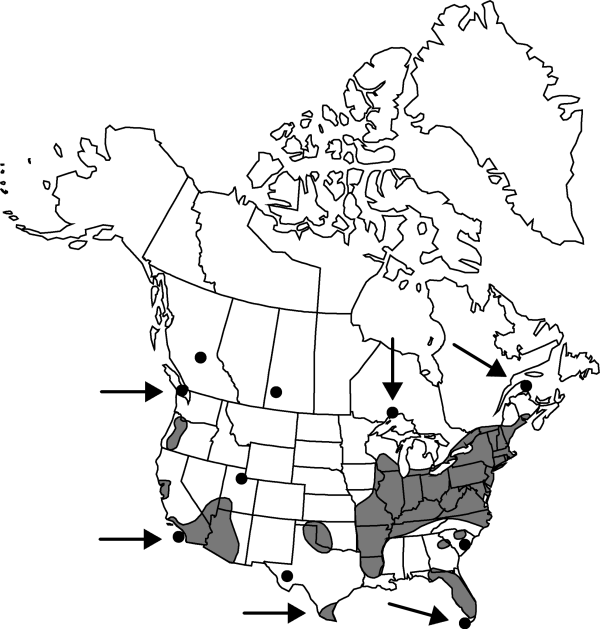Chenopodium murale
Sp. Pl. 1: 219. 1753.
Stems erect, branched, 1–6(–10) dm, glabrous (to sparsely farinose when young); proximal branches decumbent. Leaves nonaromatic; petiole 1–2.5 cm; blade triangular, ovate, or rhombic-ovate, 0.8–4(–8) × 0.4–3(–5) cm, base cuneate to rounded, margins irregularly dentate, apex acute to acuminate, glabrous (rarely indistinctly farinose when young). Inflorescences glomerules in terminal and lateral panicles, 6–7 × 4–5 cm; glomerules subglobose, 2–4 mm diam., or some flowers not in glomerules; bracts absent. Flowers: perianth segments 5, distinct nearly to base; lobes ovate, 0.5–0.8 × 0.6–0.7 mm, apex acute to obtuse, keeled abaxially, farinose, covering fruit at maturity; stamens 5; stigmas 2, 0.2 mm. Achenes depressed-ovoid; pericarp adherent, pustulate, becoming smooth with maturity. Seeds lenticular, round, 1–1.5 mm diam.; seed coat black, minutely rugose to ± smooth. 2n = 18.
Phenology: Fruiting fall.
Habitat: Waste places, roadsides, clay mounds, open oak woods, prairies, rocky hillsides, along railways
Elevation: 0-2000 m
Distribution

Introduced; B.C., N.B., Ont., Que., Sask., Ariz., Ark., Calif., Conn., Del., D.C., Fla., Ga., Ill., Ind., Ky., La., Maine, Md., Mass., Mich., Mo., Nev., N.J., N.Y., N.C., Ohio, Okla., Oreg., Pa., R.I., S.C., Tenn., Tex., Utah, Vt., Va., W.Va., Wis., native to Europe, Asia, n Africa, introduced nearly worldwide, mostly in subtropics and warm-temperate regions.
Discussion
Chenopodium murale is distinctive and is one of the more common species of the genus in the world, especially in tropical and subtropical regions.
Selected References
None.
